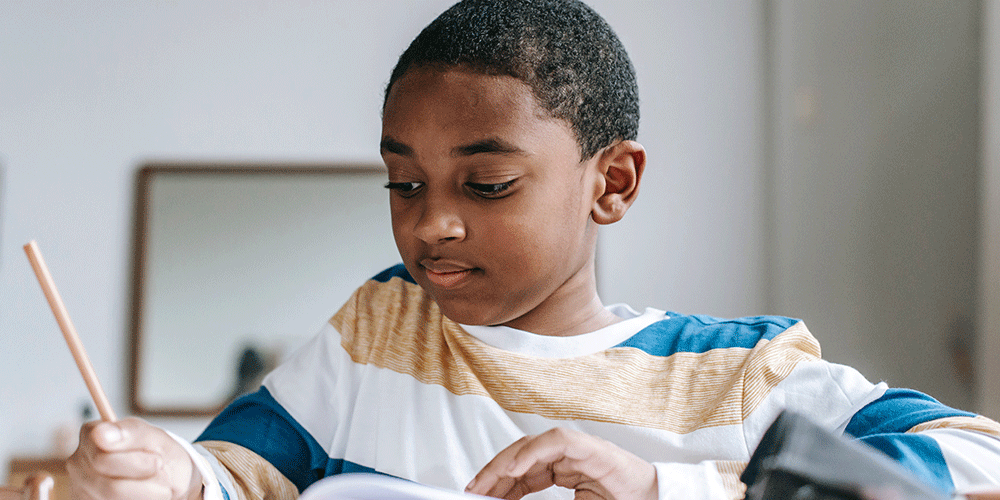Chapters
- What is dyspraxia?
- How does dyspraxia affect a child?
- What are the early warning signs of children with dyspraxia?
- How can I support my child if I believe they have dyspraxia?
Children’s development is very individual, but it’s always wise to look out for anything that seems unusual. Dyspraxia is a condition that affects children’s motor skills and impairs their physical coordination. There are several signs you should look out for if you believe your child may have dyspraxia – keep reading to find out just what they are, and how dyspraxia affects children.
What is dyspraxia?
Dyspraxia is a condition that affects physical coordination, and 2-10% of UK children experience it. The condition is also known as DCD, which stands for Developmental Coordination Disorder. Dyspraxia is a form of neurodiversity, which means that those with the condition have brains that function a little differently to most people. It can sometimes co-occur with other learning differences like dysgraphia.
Dyspraxia in children typically entails issues with tasks related to movement. A child with dyspraxia will often struggle with physical tasks and movements that other children their age are able to perform. Everyday tasks that require coordination, such as drawing, writing, throwing a ball, running and jumping are more challenging for kids with dyspraxia than they are for their peers. 🏃
Dyspraxia has been referred to as “clumsy child syndrome”, because kids with dyspraxia can often seem clumsy in their movements due to their coordination issues. Dyspraxia is about 3-4 times more common in boys than girls.
How does dyspraxia affect a child?
Identifying dyspraxia in children can be challenging. Especially when it comes to diagnosing dyspraxia in toddlers or small children. Dyspraxia generally leads to children performing less well when it comes to physical movement and coordination tasks than other kids their age.
Dyspraxia in children tends to manifest differently depending on the age of the child, so you should be aware of what to look out for at different developmental stages. 👆
Dyspraxia may affect toddlers in the following ways:
- Delays in crawling, sitting, rolling over and walking
- Limited concentration
- Difficulty playing with toys that require coordination or construction (such as building blocks, jigsaws)
- Feeding skills may be delayed, especially eating with cutlery
- Emotional – easily distressed and prone to outbursts
Dyspraxia in young children may involve the following:
- Awkward physical movement, often seen as clumsy
- Struggling with typical playground activities like jumping, playing with balls etc
- Poor motor skills (struggling with gripping pencil and using scissors)
- Language difficulties
- Often messy eaters, preferring to eat with hands rather than cutlery
- Very active and struggling to sit still
- Limited concentration
- Quite excitable and emotional
Dyspraxia may affect older children in the following ways:
- Difficulties complying with school routines
- Struggling with writing
- Concentration issues
- Difficulties in PE due to physical coordination issues
- Struggling to sit still
- Sleep issues
Older children with dyspraxia who haven’t received the support they need will often develop negative feelings towards school and their education. They may also struggle to form and develop friendships with other children and end up feeling “different”.
What are the early warning signs of children with dyspraxia?
There are several different symptoms of dyspraxia, and they can be observed in very young children.
The big developmental milestones in children’s early years, such as crawling, walking, as well as starting to get dressed and feeding themselves, are often delayed in children with dyspraxia. Hand movements like clapping, flapping or waving is also often seen in kids with dyspraxia, especially when excited.
As kids get a little older, dyspraxia manifests in issues with writing and drawing as well as sports performance – which means many children with dyspraxia fall behind or struggle at school. ✏️
It’s important to keep in mind that children’s development is highly individual. If you believe your child’s motor skills are developing slower than average, this is often no reason to worry – some children just take a little longer to pick up on certain skills, and this is normal.
This difference in rates of development is the reason children under 5 usually aren’t given a definite diagnosis of dyspraxia.
How can I support my child if I believe they have dyspraxia?
If you believe your child may have dyspraxia, we recommend that you speak to your GP or a special education needs co-ordinator at your child’s school. They will be able to advise you and refer your child for an assessment that will give you a better understanding of your their development. 👨🏫
Keep in mind that if your child is diagnosed with dyspraxia, this is a fairly common condition that affects a number of children and adults. There’s some great help available for kids with dyspraxia who need to develop their motor skills, including fun games online.
At GoStudent, we’re committed to offering excellent online tutoring to all kids that need a little extra help. Our tutors are able to tailor their sessions to the individual needs of the children they work with, so if you think tutoring could be beneficial for your child, don’t hesitate to get in touch! 🚀




.jpg?upsize=true&upscale=true&width=100&height=100&name=math-square-root%20(1).jpg)





.jpg?width=415&height=205&name=bored-kids-studying-drwaing%20(1).jpg)